In this AgriSolar Clearinghouse webinar, Dr. Greg Barron-Gafford discusses the effects of growing crops under solar panels.
The AgriSolar webinar series continues in March. Sign up for these free webinars, here.
In this AgriSolar Clearinghouse webinar, Dr. Greg Barron-Gafford discusses the effects of growing crops under solar panels.
The AgriSolar webinar series continues in March. Sign up for these free webinars, here.
By Dr. Stacie Peterson
The interdisciplinary research at Biosphere 2 and Manzo Elementary School in Tucson, Arizona is foundational for agrivoltaics in the United States. My first introduction to agrivoltaics came from research at these sites, in the article Agrivoltaics Provide Mutual Benefits Across the Food-Energy-Water Nexus in Drylands. The opportunity to tour these sites, meet the researchers, and provide the AgriSolar Clearinghouse network with a way to connect was exciting indeed.
The tour started at the Biosphere 2 site, where Dr. Greg Barron-Gafford and graduate students Kai Lepley, Alyssa Salazar, Nesrine Rouini, and Caleb Ortega described their research, findings, and future projects. Greg provided a background of Biosphere 2, research conducted at the site, its application to agrivoltaics throughout the country, and its correlation to work at the Manzo Agrivoltaic site.
Kai Lepley and Nesrine Rousini then described their work employing classic plant physiological instruments and novel ground-based remote sensing tools for tracking plant phenology and growth. Alyssa Salazar described her studies on agrivoltaics impacts to the phenology and growing season patterns of different crops across our growing seasons and how this research can help determine how this approach might extend the growing seasons of certain crops. Caleb Ortega described his planting approach as well as efficient and creative ways of collecting data. They then asked the tour to help plant seeds for next years’ agrivoltaic experiments.
After a tour of the Biosphere 2 complex, the group travelled to Manzo Elementary Agrivoltaic site, where Mariah Rogers, Mira Kaibara, Stacy Evans, and Dr. Andrea Gerlak led a lunch-and-learn about the food science, social science, citizen science, student activities, and agrivoltaic food programs. Mariah’s research involves blind taste tests of agrivoltaic and traditionally grown crops to determine if there are detectable differences in preference.
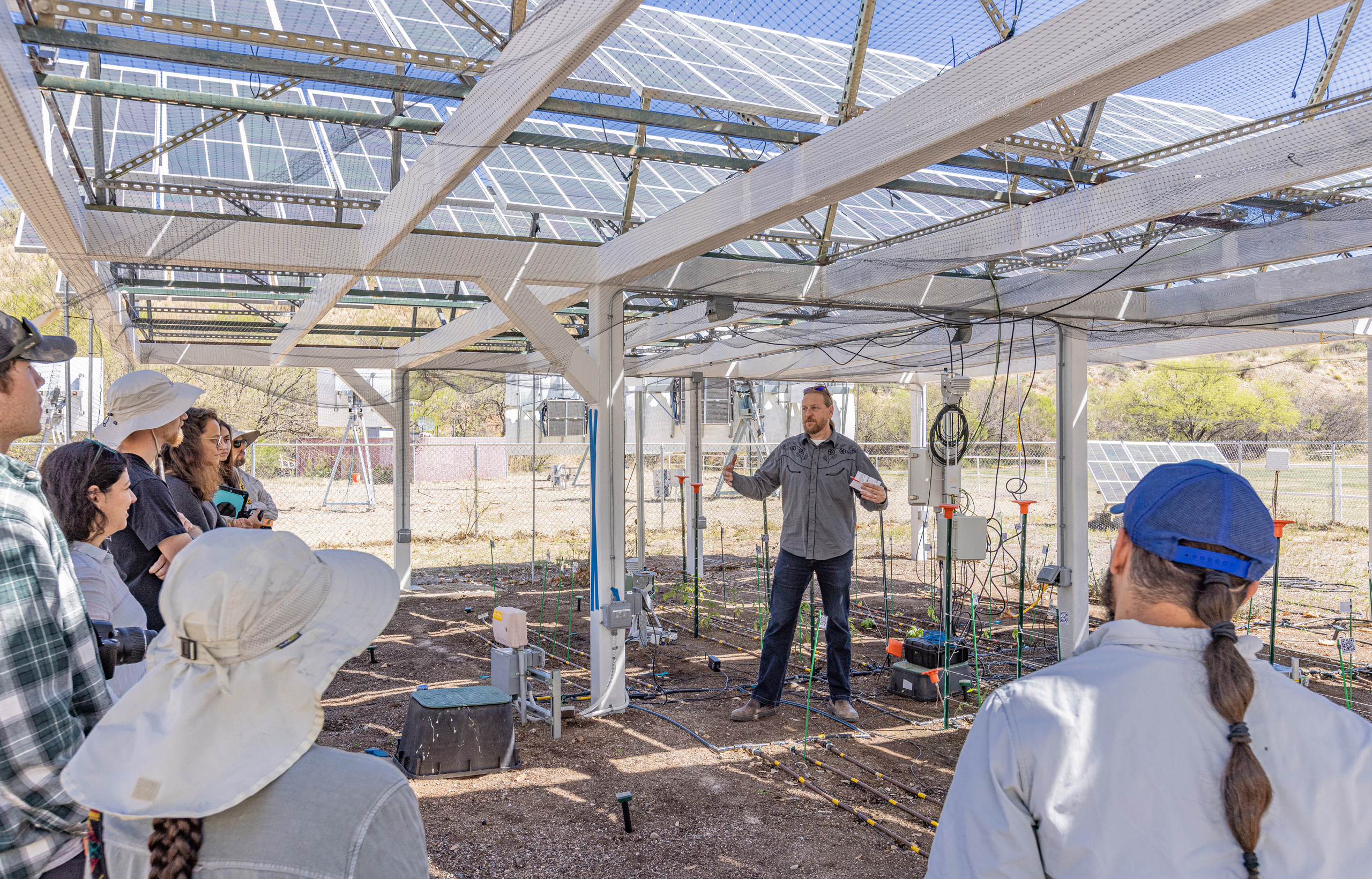
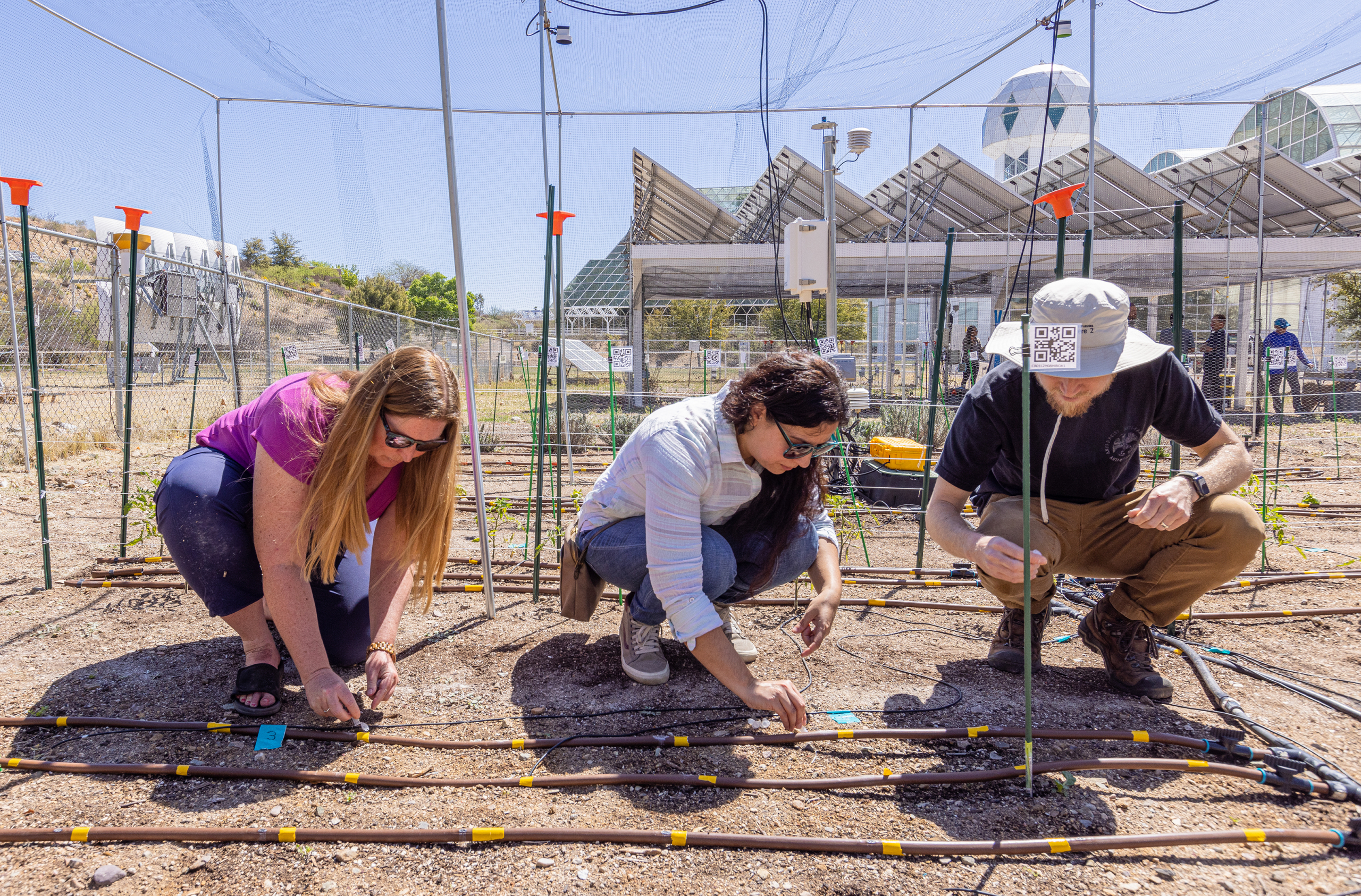
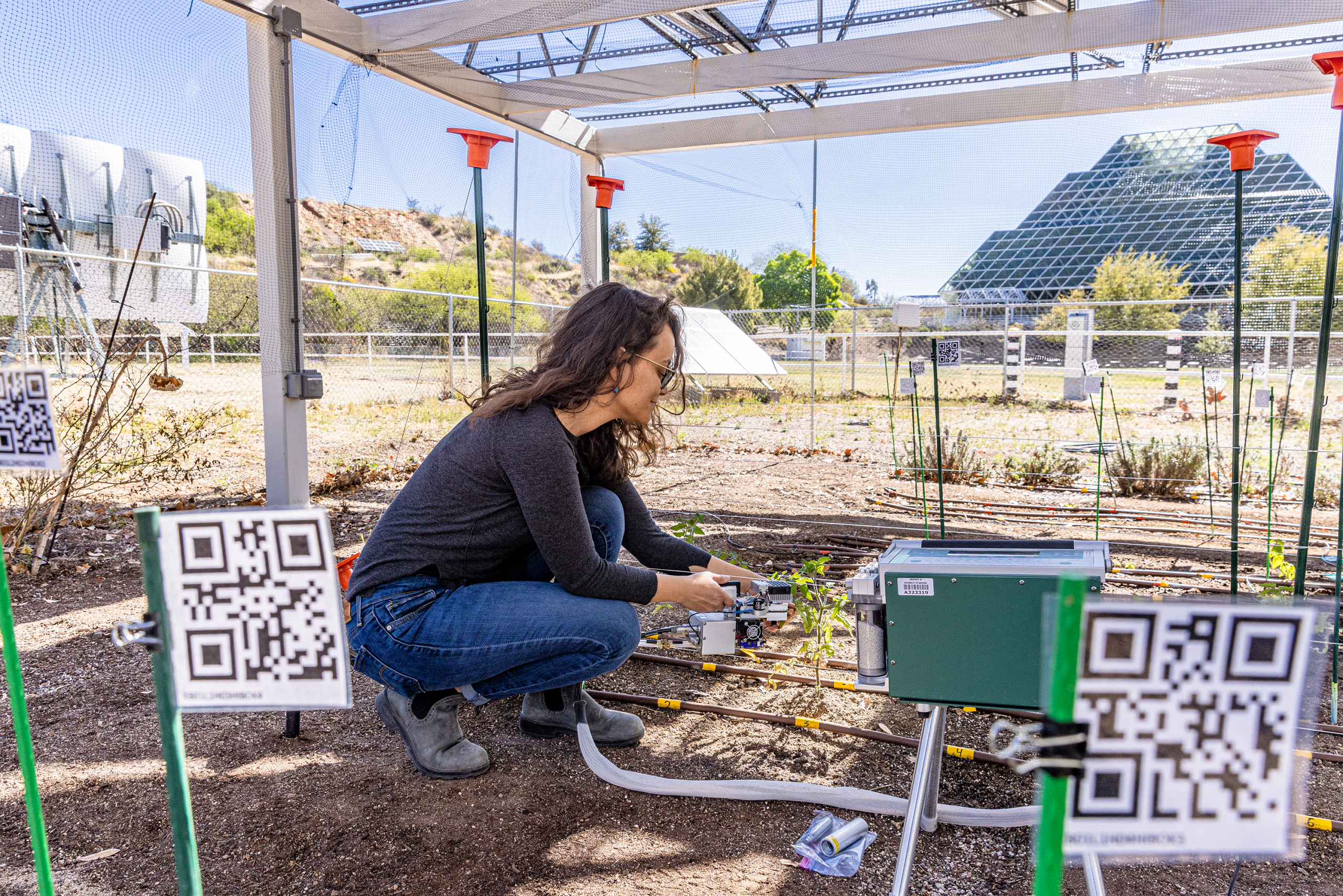
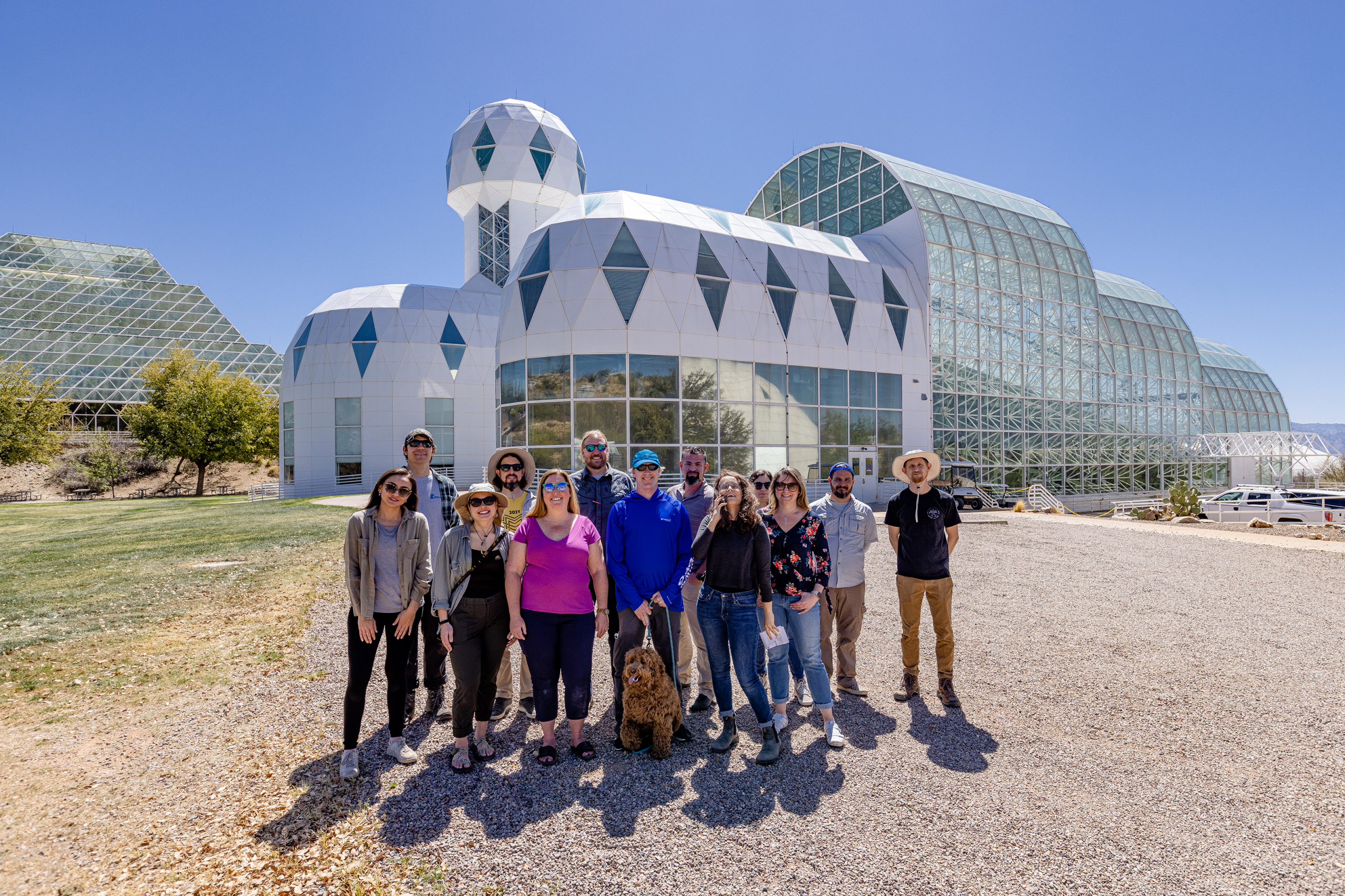
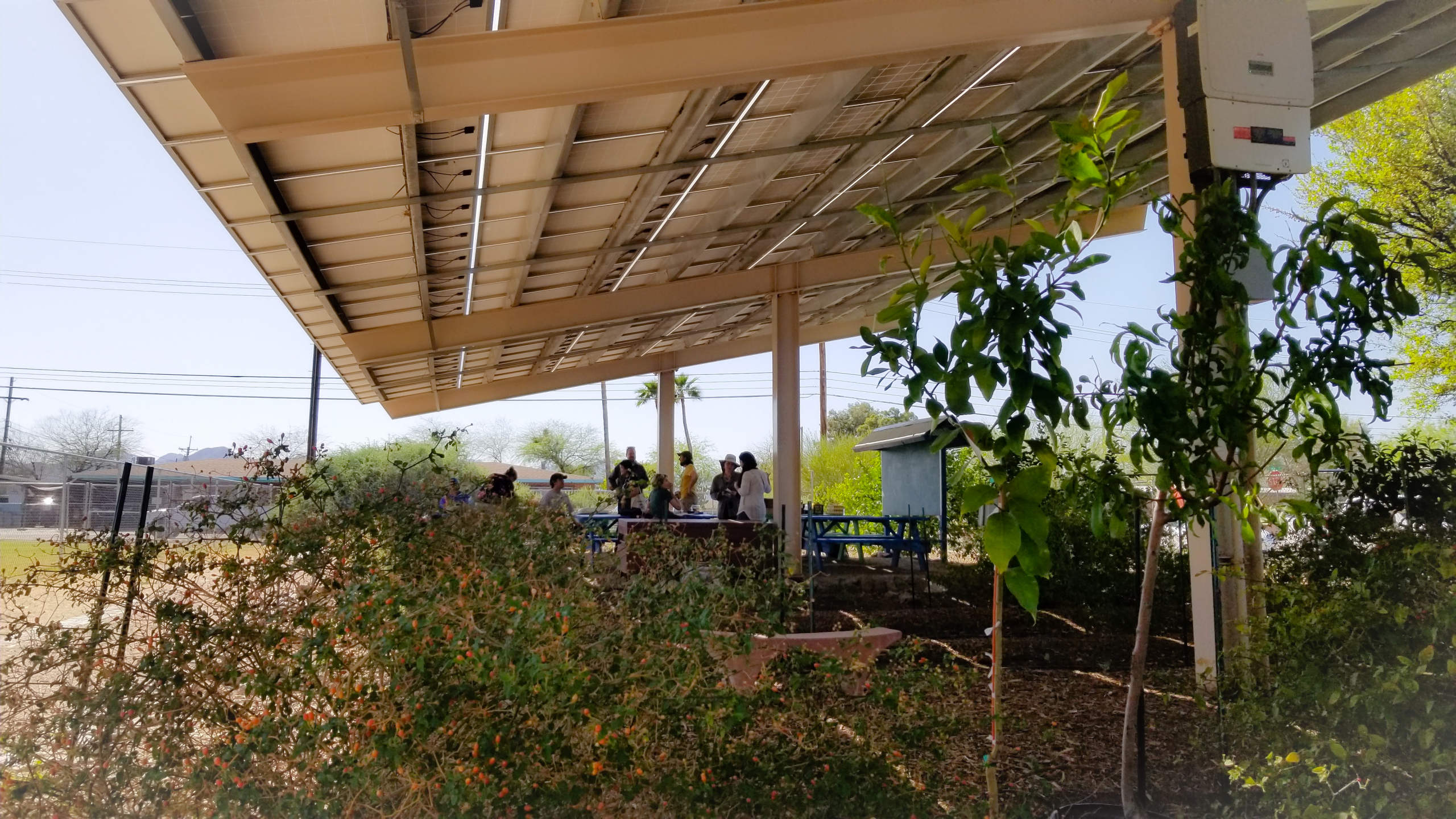
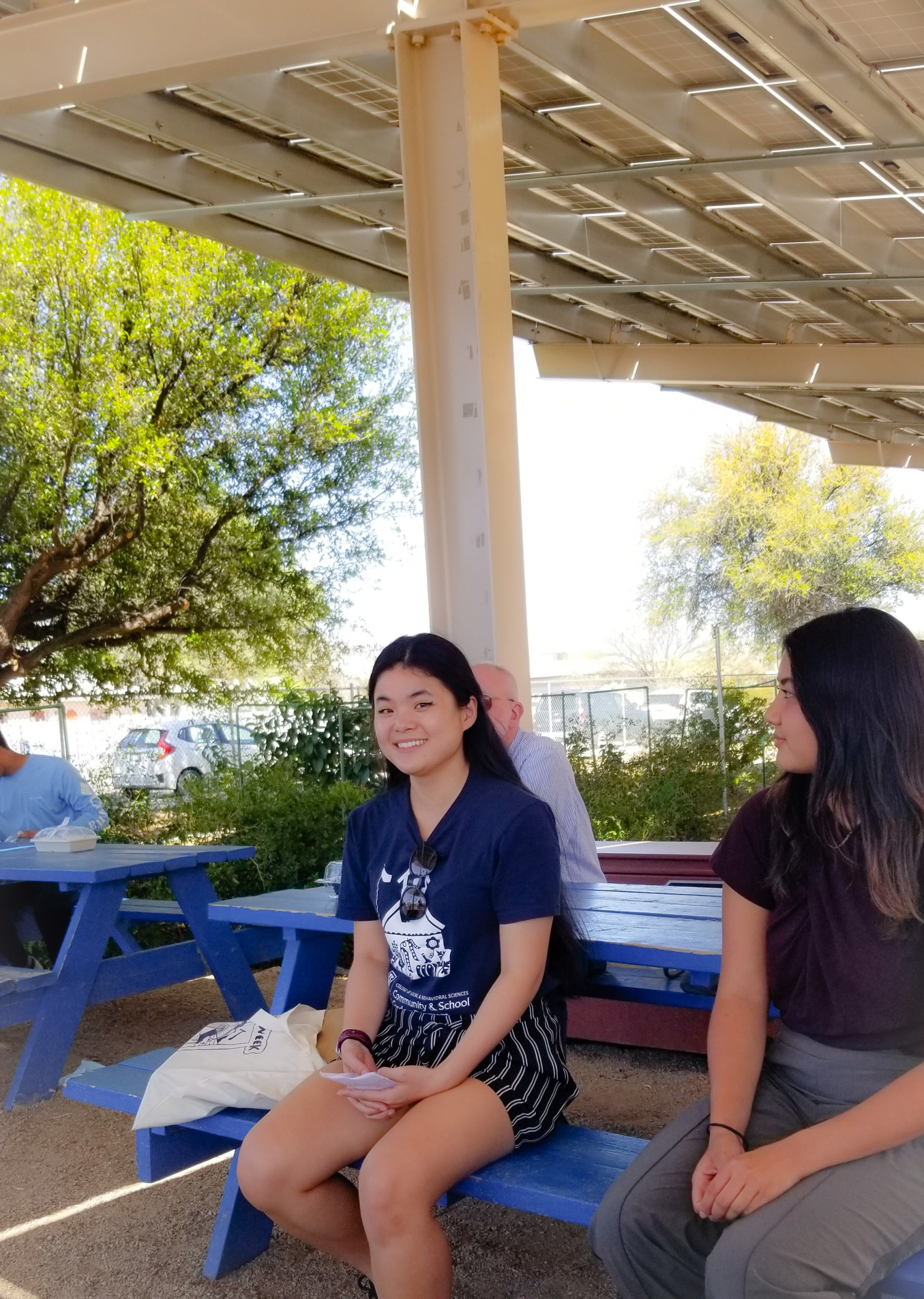
Dr. Andrea Gerlak, professor of Public Policy at the University of Arizona with extensive experience working on water resource policy and management issues, described her research, and its correlation to work by Alexis Pascaris, and their collaboration on the USDA-NIFA grant for agrivoltaics research (SCAPES project). Alexis is a social scientist whose research involves engaging key stakeholders – including farmers and solar industry professionals – to understand their perspectives about opportunities and barriers to agrivoltaics, which helps inform policy innovation and identify pathways to advance dual-use development responsibly.
We were lucky enough to be joined by Alexis Pascaris of AgriSolar Consulting, Thomas Hickey of Sandbox Solar, Gema Martinez of BayWa r.e., Brian Naughton of Circle Two and Sandia National Laboratories, Mark Peterson of the Montana Department of Environmental Quality, and AgriSolar Clearinghouse Partner Coordinator, Danielle Miska. In coming months, we will lead tours to Minnesota, Colorado, Oregon, California, Massachusetts, Idaho, New York, and Texas. We hope you’ll join us!
NPR recently visited Jack’s Solar Garden, a Colorado farm among about a dozen in the U.S. investing in the colocation of solar energy and farmland.
When Byron Kominek returned home after the Peace Corps and later working as a diplomat in Africa, his family’s 24-acre farm near Boulder, Colo., was struggling to turn a profit.
“Our farm has mainly been hay producing for fifty years,” Kominek said, on a recent chilly morning, the sun illuminating a dusting of snow on the foothills to his West. “This is a big change on one of our three pastures.”
That big change is certainly an eye opener: 3,200 solar panels mounted on posts eight feet high above what used to be an alfalfa field on this patch of rolling farmland at the doorstep of the Rocky Mountains. – NPR
Now, Kominek sells renewable energy back into the local power grid.
As much of the western U.S. has been plagued by a 22-year megadrought, NPR reports that agrisolar is gaining momentum.
“Around the western US, water is the reason to go to war,” says Greg Barron-Gafford, a University of Arizona professor who is considered one of the country’s foremost experts in the field.
“Water is the reason we have to have real big arguments about where we’re going to get our food from in the future,” he says.
Barron-Gafford’s research in the Arizona desert showed some crops grown underneath solar panels needed 50% less water. He and other scientists have their eyes on the infrastructure bill and are pushing to get some of the estimated $300 million included in it for new solar projects to go toward agrivoltaics.
“If you really want to build infrastructure in a way that is not going to compete with food and could actually take advantage of our dwindling resources in terms of water in a really efficient way, this is something to look at,” Barron-Gafford says. – NPR
Greg Barron-Gafford is among more than 30 partners of NCAT’s AgriSolar Clearinghouse.
AgriSolar Clearinghouse partner Greg Barron-Gafford highlights the Biosphere 2 work in Agrivoltaics, including the application of biosphere techniques to fine-tune agrivoltaic crop growing.
The project includes citizen science that engages high-school students in a long-term agrivoltaic installation at the University of Rincon High School.
This video was produced by The Good Stuff.
AgriSolar Clearinghouse partner Greg Barron-Gafford describes the mutual benefits of growing crops under solar panels in large-scale solar arrays.
In this video produced by Arizona Public Media, Dr. Gafford explains these benefits through an ecological approach of a salsa garden understory and a solar panel overstory.